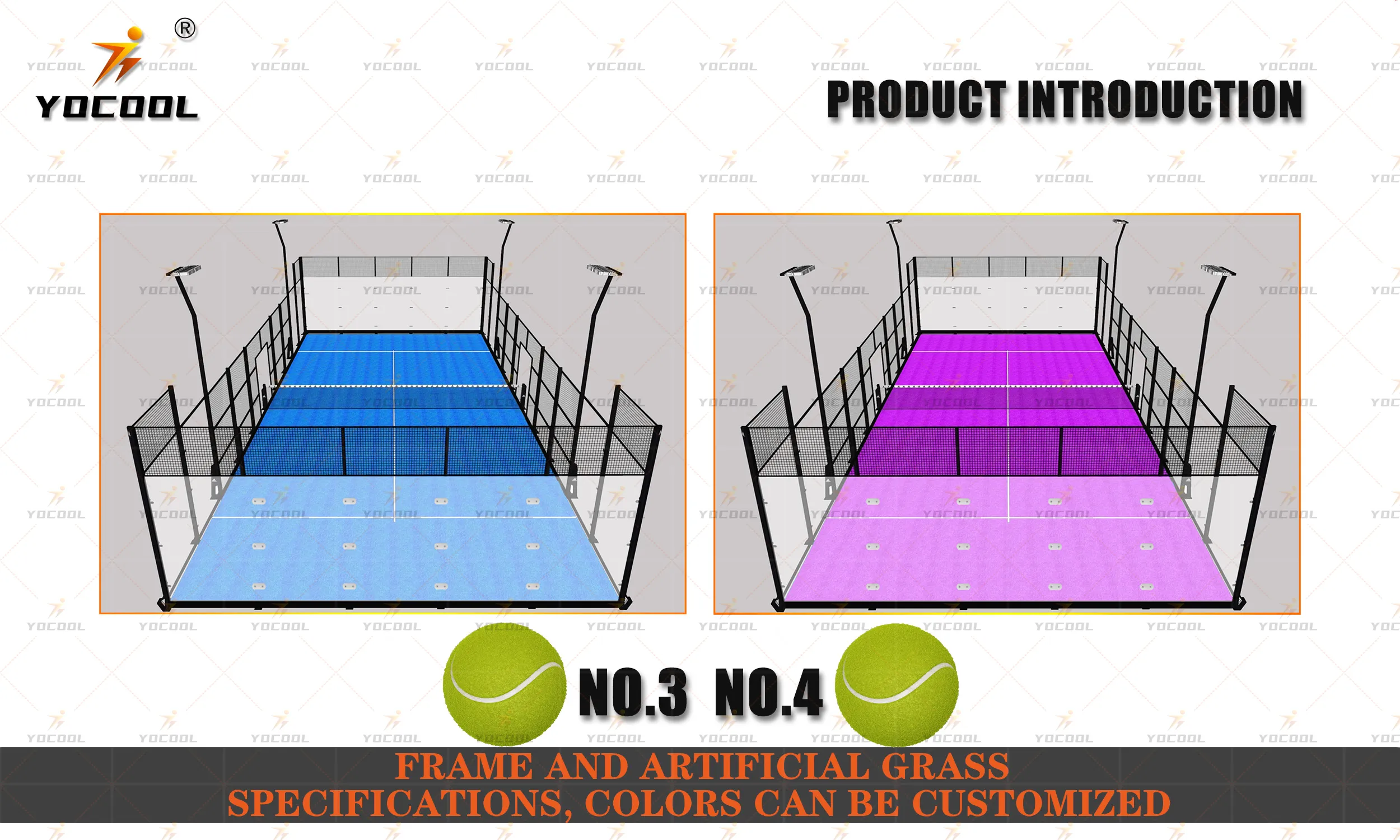

Build Your Own Padel Court A Guide for Enthusiasts
Padel, a racket sport that combines elements of tennis and squash, has rapidly gained popularity around the world, especially in Europe and Latin America. With simple rules, an engaging gameplay style, and a community-focused environment, it's no wonder that many sports enthusiasts are eager to get in on the action. One of the best ways to enjoy this exhilarating game is by building your own padel court. In this article, we will guide you through the key considerations and steps to creating your very own padel court.
Understanding Padel Court Dimensions
Before you embark on this exciting project, it's important to familiarize yourself with the official dimensions of a padel court. According to the International Padel Federation (FIP), a standard padel court measures 20 meters in length and 10 meters in width. The area is enclosed by walls, which can be made of glass or solid materials, standing at a height of 3 meters on the sides and 4 meters in the back. The surface of the court is typically constructed using artificial grass or other appropriate materials that offer good traction and cushioning for players.
Choosing the Right Location
Finding the perfect location for your padel court is crucial. Ideally, the site should have enough space to accommodate the court's dimensions, as well as additional areas for seating, access paths, and possibly even lighting. Look for a level area that is free from obstructions such as trees and large rocks. Accessibility is also important; consider how players and spectators will enter the area and whether you'll need parking facilities.
Materials and Budgeting
Building a padel court requires various materials, and the choice you make will significantly impact both the aesthetic and functional quality of the court. Common surface materials include artificial grass, concrete, or resin. Each surface has its pros and cons, ranging from maintenance needs to the level of comfort for players.
In terms of budget, it's important to assess how much you are willing to spend. Costs can vary widely based on materials, fencing, lighting, and whether you decide to hire professionals for construction. It's advisable to create a detailed budget plan that includes all potential expenses, such as permits, labor, and equipment.
Construction Steps

Once you've surveyed the location and established a budget, you can begin the construction process. Here is a step-by-step outline
1. Preparation Clear the designated area of any debris or vegetation. Ensure the ground is level, considering drainage to prevent water accumulation. 2. Sub-base Installation Lay a solid sub-base to provide stability for the court's surface. This typically involves compacting gravel or a similar material.
3. Fence Installation Install fencing around the perimeter of the court. You'll need a combination of solid and glass walls to meet the official specifications. Ensure that the walls are stable and securely anchored.
4. Surface Laying Once the fencing is in place, lay down the court surface. For artificial grass, ensure proper drainage is in place. Follow the manufacturer's instructions for installation carefully to avoid long-term issues.
5. Net and Markings Install the net in the center of the court and mark the lines according to the official specifications. Check for levelness and alignment to ensure fair play.
6. Lighting Setup If you plan to play at night, install adequate lighting. This typically involves multiple floodlights around the court to ensure even illumination.
Maintenance Tips
Like any sports facility, a padel court requires regular maintenance to ensure optimal playing conditions. Regularly check the surface for wear and tear, particularly if you’re using artificial grass. Keep the area clean and free from debris, and make sure that the net and walls are in good condition.
Conclusion
Building your own padel court can be a rewarding project that not only provides a place for fun and exercise but also fosters community connections. By carefully planning the dimensions, selecting the right location, budgeting your expenses, and following through with the construction steps, you’ll create a fantastic venue for enjoying padel, hosting tournaments, and gathering with friends and family. With your own padel court, you’ll be part of the growing padel community in no time!
Premium Paddle Tennis Rackets for Every Court & Player
Premium Padel Courts: Expert Design & Installation Services
Premium Padel Courts: Panoramic Designs & Custom Builds
Premium Padel Court | Custom Designs & Quality Installation
Paddle Tennis Rackets: Unleash Power & Precision on Court
Best Paddle Tennis Rackets: Power, Control & Comfort